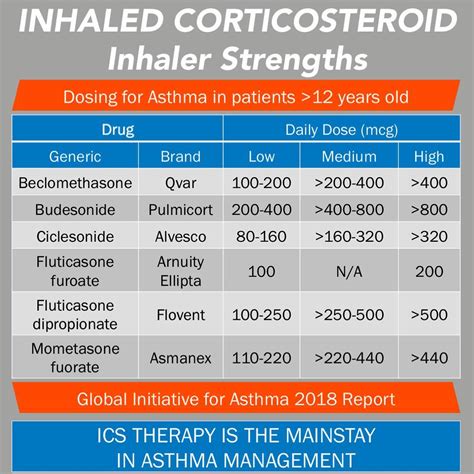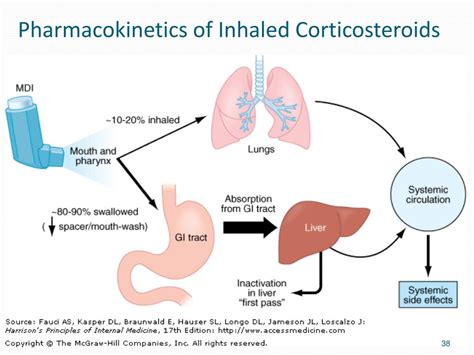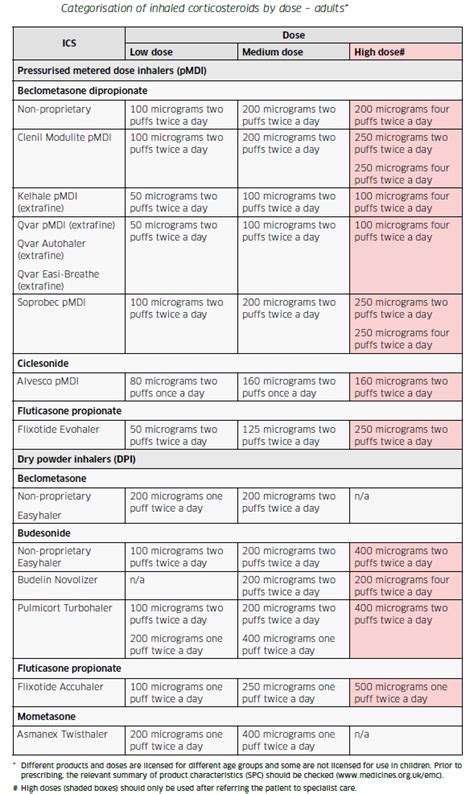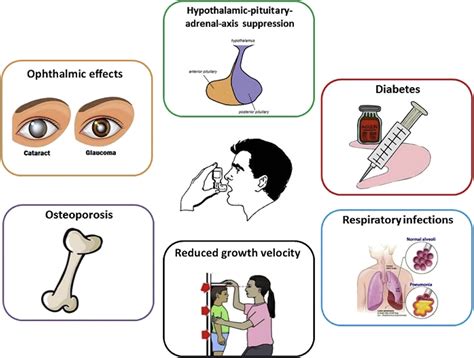In recent years, the prevalence of respiratory diseases such as asthma and chronic obstructive pulmonary disease (COPD) has increased significantly, affecting millions of people worldwide. One of the most effective treatments for these conditions is inhaled corticosteroids (ICS). ICS have become a cornerstone in the management of respiratory diseases, offering numerous benefits and improving the quality of life for patients. In this article, we will delve into the world of inhaled corticosteroids, exploring their mechanisms, benefits, and importance in treating respiratory diseases.
The use of inhaled corticosteroids has revolutionized the treatment of respiratory diseases, providing a targeted and effective approach to managing symptoms and preventing exacerbations. By delivering the medication directly to the lungs, ICS can reduce inflammation, improve lung function, and enhance overall health outcomes. With their widespread use, it is essential to understand how inhaled corticosteroids work, their benefits, and their role in managing respiratory diseases.
Respiratory diseases such as asthma and COPD are characterized by chronic inflammation, airway obstruction, and recurring symptoms. Inhaled corticosteroids have been shown to be effective in reducing inflammation, improving lung function, and decreasing the frequency of exacerbations. By understanding the mechanisms of ICS, healthcare professionals can optimize treatment strategies, improve patient outcomes, and enhance the quality of life for individuals with respiratory diseases.
Introduction to Inhaled Corticosteroids
Inhaled corticosteroids are a type of medication that is inhaled directly into the lungs, where they can exert their effects locally. ICS are available in various forms, including metered-dose inhalers, dry powder inhalers, and nebulizers. They work by reducing inflammation, improving lung function, and decreasing the frequency of exacerbations. ICS are often used in combination with other medications, such as bronchodilators, to provide comprehensive treatment for respiratory diseases.
How Inhaled Corticosteroids Work
Inhaled corticosteroids work by binding to specific receptors in the lungs, where they can exert their anti-inflammatory effects. This binding process triggers a cascade of events that ultimately lead to the reduction of inflammation, improvement of lung function, and decrease in symptoms. The mechanisms of ICS can be broken down into several key steps:
* Reduction of inflammation: ICS decrease the production of pro-inflammatory mediators, which contribute to the development of inflammation in the lungs.
* Improvement of lung function: By reducing inflammation, ICS can improve lung function, making it easier for patients to breathe.
* Decrease in symptoms: ICS can decrease the frequency and severity of symptoms, such as wheezing, coughing, and shortness of breath.
Benefits of Inhaled Corticosteroids
The benefits of inhaled corticosteroids are numerous, making them a cornerstone in the treatment of respiratory diseases. Some of the key benefits of ICS include:
* Improved lung function: ICS can improve lung function, making it easier for patients to breathe and perform daily activities.
* Reduced symptoms: ICS can decrease the frequency and severity of symptoms, such as wheezing, coughing, and shortness of breath.
* Decreased exacerbations: ICS can reduce the frequency of exacerbations, which can improve the quality of life for patients and decrease healthcare costs.
Types of Inhaled Corticosteroids
There are several types of inhaled corticosteroids available, each with its own unique characteristics and benefits. Some of the most commonly used ICS include:
* Fluticasone: Fluticasone is a potent ICS that is often used in combination with bronchodilators to provide comprehensive treatment for respiratory diseases.
* Budesonide: Budesonide is a widely used ICS that is available in various forms, including metered-dose inhalers and dry powder inhalers.
* Beclomethasone: Beclomethasone is a commonly used ICS that is often used in combination with other medications to provide effective treatment for respiratory diseases.
Side Effects of Inhaled Corticosteroids
While inhaled corticosteroids are generally well-tolerated, they can cause side effects in some patients. Some of the most common side effects of ICS include:
* Thrush: ICS can increase the risk of developing thrush, a fungal infection that can cause white patches to form in the mouth and throat.
* Hoarseness: ICS can cause hoarseness, which can be uncomfortable and affect a patient's ability to communicate.
* Coughing: ICS can cause coughing, which can be a nuisance and affect a patient's quality of life.
Minimizing Side Effects
To minimize the risk of side effects, patients should use their ICS as directed and follow these tips:
* Use a spacer: Using a spacer can help reduce the amount of medication that is deposited in the mouth and throat, reducing the risk of thrush and hoarseness.
* Rinse mouth: Rinsing the mouth after using ICS can help reduce the risk of thrush and hoarseness.
* Monitor symptoms: Patients should monitor their symptoms and report any changes to their healthcare provider.
Conclusion and Future Directions
In conclusion, inhaled corticosteroids are a vital component in the treatment of respiratory diseases, offering numerous benefits and improving the quality of life for patients. By understanding the mechanisms, benefits, and side effects of ICS, healthcare professionals can optimize treatment strategies and improve patient outcomes. As research continues to evolve, we can expect to see new and innovative treatments emerge, further improving the management of respiratory diseases.
Final Thoughts
Inhaled corticosteroids have revolutionized the treatment of respiratory diseases, providing a targeted and effective approach to managing symptoms and preventing exacerbations. As we move forward, it is essential to continue researching and developing new treatments, ensuring that patients receive the best possible care. By working together, we can improve the lives of individuals with respiratory diseases and create a brighter future for all.
Call to Action
If you or a loved one is living with a respiratory disease, it is essential to stay informed and up-to-date on the latest treatments and research. By working closely with your healthcare provider and staying committed to your treatment plan, you can manage your symptoms, improve your lung function, and enhance your overall quality of life. Remember to always follow the instructions provided by your healthcare provider and to report any changes in your symptoms or side effects.
What are inhaled corticosteroids?
+
Inhaled corticosteroids are a type of medication that is inhaled directly into the lungs to reduce inflammation and improve lung function.
How do inhaled corticosteroids work?
+
Inhaled corticosteroids work by binding to specific receptors in the lungs, where they can exert their anti-inflammatory effects, reducing inflammation and improving lung function.
What are the benefits of inhaled corticosteroids?
+
The benefits of inhaled corticosteroids include improved lung function, reduced symptoms, and decreased exacerbations, ultimately improving the quality of life for patients with respiratory diseases.
What are the common side effects of inhaled corticosteroids?
+
The common side effects of inhaled corticosteroids include thrush, hoarseness, and coughing, which can be minimized by using a spacer, rinsing the mouth, and monitoring symptoms.
How can I minimize the risk of side effects from inhaled corticosteroids?
+
To minimize the risk of side effects, patients should use their ICS as directed, use a spacer, rinse their mouth after use, and monitor their symptoms, reporting any changes to their healthcare provider.
We hope this article has provided you with a comprehensive understanding of inhaled corticosteroids and their role in managing respiratory diseases. If you have any further questions or would like to share your experiences with ICS, please don't hesitate to comment below. By working together, we can create a supportive community and improve the lives of individuals with respiratory diseases.







